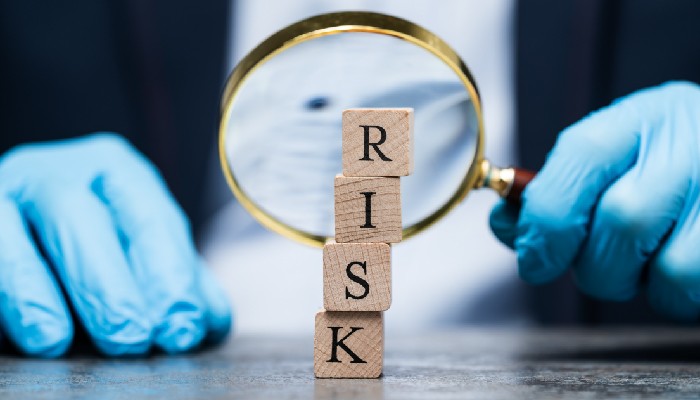Are You Really Understanding the Client’s Risks? Detailed guide

As a professional in any field—whether it’s law, finance, consulting, or business—your ability to understand your client’s risks can make or break your relationship with them. Risk is an unavoidable part of life and business. However, not all risks are immediately obvious, and even fewer are understood correctly by clients. In this article, we will discuss why understanding client risks is so crucial, how to identify them, and why clear communication is essential.
What Are Client Risks?
Client risks refer to the potential threats or challenges that could affect the client’s ability to achieve their goals. These risks could stem from external factors (such as market fluctuations, economic shifts, or natural disasters) or internal factors (like operational inefficiencies, mismanagement, or lack of resources). Understanding these risks is essential because it helps clients navigate uncertainty, minimize negative consequences, and make informed decisions.
Why Understanding Risks Matters
- Tailoring Solutions to Client Needs Every client is different. What works for one client may not work for another. By understanding the unique risks they face, you can offer personalized strategies and solutions that best meet their needs. For example, a law firm working with a client in the healthcare industry might need to focus on compliance and privacy risks, whereas a financial advisor working with a startup might focus on cash flow and market risks.
- Building Trust and Confidence When clients feel that you understand their risks and challenges, they are more likely to trust your advice. This trust leads to a stronger, more collaborative relationship. Clients want to know that their concerns are heard and that you are working in their best interest. If you’re able to explain the risks in a way they can understand, they’ll feel more confident in the strategies you propose.
- Minimizing Surprises and Damaging Outcomes Risks are often unpredictable, but with a proper understanding, you can help clients prepare for worst-case scenarios. Whether it’s a potential lawsuit, a market downturn, or a regulatory change, being aware of potential risks allows you to help clients mitigate the negative impact of these surprises. This foresight helps clients avoid unnecessary damage to their business, reputation, or personal finances.
- Compliance and Legal Obligations In some industries, understanding and managing risk is not just important; it’s a legal requirement. For example, businesses must comply with regulations related to data security, environmental standards, or financial reporting. If you fail to identify the risks associated with non-compliance, your client could face legal penalties, fines, or even business closure. Being proactive in identifying these risks can help avoid such outcomes.
How to Understand Client Risks
- Listen Carefully Often, clients may not directly express the risks they are facing. Instead, they might talk about their concerns, goals, or the challenges they face. Listening carefully to these discussions is the first step toward understanding their risks. Ask open-ended questions, and be curious about the details of their business or personal situation. The more you listen, the more likely you’ll be able to spot hidden risks.
- Do Your Research To understand a client’s risks, you need to have a deep understanding of their industry, market trends, and any external factors that might affect them. For instance, if you’re advising a business owner, you should be aware of the economic environment, competitors, and potential market disruptions. Staying up-to-date on news, regulations, and best practices in your client’s industry will help you provide more informed advice.
- Assess Historical Data and Trends Look at the client’s history to identify patterns. Have they experienced financial setbacks in the past? Have there been operational challenges or legal disputes? Past challenges can often be a sign of future risks, and understanding these patterns allows you to proactively address them. Risk assessment tools, such as SWOT analysis (Strengths, Weaknesses, Opportunities, and Threats), can also be helpful in this regard.
- Collaborate with Your Client’s Team Don’t rely on your perspective alone—collaborate with your client’s team to gain a full understanding of the risks. This could mean speaking with employees, managers, or other advisors who have hands-on knowledge of the client’s operations. They may provide insights that you might miss on your own. Engaging with your client’s team allows you to understand risks from multiple angles.
- Use Risk Assessment Tools Many industries and professions have established risk management frameworks or tools that can help identify potential risks. These might include risk matrices, risk registers, or specialized software. These tools help quantify and categorize risks, which makes it easier to address them systematically. They also help in creating a baseline for tracking risks over time.
Communicating Risks to Clients
Once you understand the risks, it’s essential to communicate them clearly to your clients. Clients often find it hard to comprehend technical jargon or complex risk assessments, so breaking it down into simple, understandable language is key.
- Be Honest but Tactful Be straightforward in your communication, but also be empathetic. Clients don’t like to hear bad news, so it’s important to deliver your message with care. Use clear examples to help illustrate the potential consequences of these risks. If you present risks in a way that highlights the possible outcomes and also presents solutions, clients will appreciate your transparency.
- Use Visual Aids Sometimes, a visual representation can help make complex risks more tangible. Diagrams, charts, or infographics can simplify risk explanations. For instance, a risk matrix could show the likelihood and impact of different risks, allowing clients to visually assess the severity of each one.
- Present Mitigation Plans Simply identifying risks is not enough—you must also show your clients how these risks can be mitigated. Develop clear action plans and suggest practical steps to reduce or avoid the risks. Clients want to know how they can protect themselves, and by offering solutions, you build your credibility as a trusted advisor.
- Review Risks Regularly Risk management is an ongoing process. Regularly review the risks with your clients to ensure that new risks have been identified and that existing ones are being properly managed. Business environments and personal circumstances change, and so do risks. Regular check-ins ensure that you are always on top of the situation.
Common Risks to Consider
Here are some of the most common risks clients may face:
- Financial Risks: These include issues like poor cash flow, credit risk, fluctuating interest rates, or poor investments.
- Market Risks: Changes in the market, competition, or consumer demand can affect a client’s business.
- Compliance Risks: The risk of failing to adhere to regulations or legal requirements can lead to penalties, lawsuits, or damage to reputation.
- Operational Risks: These include internal challenges like process inefficiencies, employee turnover, or supply chain disruptions.
- Reputational Risks: Negative publicity, social media backlash, or customer dissatisfaction can damage a client’s reputation.
- Cybersecurity Risks: Increasing threats from hackers and data breaches can be devastating to businesses.
Conclusion
Understanding your client’s risks is crucial in providing effective advice, building trust, and helping them navigate uncertain waters. By actively listening, conducting thorough research, collaborating with your client’s team, and using the right tools, you can identify risks that may not be immediately obvious. Most importantly, you must communicate these risks in an understandable and actionable way to empower your clients. By doing so, you help them minimize threats and make informed decisions that will lead to their success.
Remember, risk management is an ongoing process, and as your client’s trusted advisor, staying on top of their risks is one of the most valuable services you can provide.



